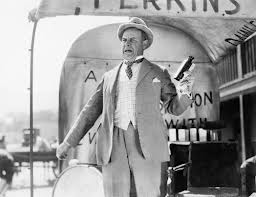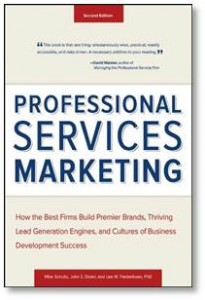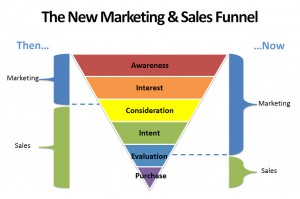What if Fixing your Sales problem was Simple?
I love the above quote by Ralph Waldo Emerson. What if fixing your sales problem was simple? What if your sales team could be great? Far too often I see clients try too many tactics and fail to connect to a core strategy to understand then completely solve the problem. I hear owners and CEO’s describe sales problems that need fixed in many ways; We need “more sales”. We need “increased sales”. How do we “sell new products”? How do we “increase our sales close rate”? How people describe sales problems they want to fix varies but what they all want and need is to create sales velocity that I shared in a post some time ago…
Sales Velocity is Sales Acceleration, with Direction and creates Momentum.
Easy to say, but the perception is it is hard to do…Not so fast!
What if I told you growing your sales profitably is actually “Simple” if you focus on one strategy?
I was asked to be the keynote speaker for a large local company having their national meeting recently. I asked the person in charge of the meeting what they wanted me to speak about? How can I best serve those in attendance? What is the outcome you want from me kicking off your national meeting? He responded: we want what everyone wants; more sales, higher profits, and product launches that hit and surpass our product launch sales goals. Can you share how to fix these sales problems? No Problem I shared it’s what I have done for over 30 years, I will give your team a great experience.
To get my creative juices flowing I did some Google searches to read advice this group may have already found…
Increase sales : 623 million results
Increase Sales and Profits : 270 million results
Fix Sales Problems: 85 million results
The trouble is so many of these results is they jump right into tactics and lack a focused strategy. No wonder so many companies struggle with increasing sales profitably. What advice should you listen to? What programs, training, coaching should you follow?
What I am about to say may cause some people to say;” It can’t be that easy”, but I have case study after case study that proves it is.
If you want to fix all your sales problems and increase sales and profits you must …..Are you ready?
Know your customers and markets. (That’s it …simple right?)
“The reason sales goals are missed and sales increases fail to happen is companies jump into sales tactics without clearly knowing their customers.”
- Mark Allen Roberts
Teams try tactics until they find one that seems to work. The trouble with this approach is we serve dynamic markets. Markets shift quickly and we must constantly be in tune with our customers and markets. We must understand the process they use to buy, the criteria they must have to make buying decisions and clearly understand the problems they are solving today.
Who is the worst person to inform you of market shifts and understand unresolved problems?…Salespeople! (Kills me to say this) Why is this the case? For the same reason they are the worst people to conduct win loss interviews. They are focused on selling. It’s what you pay them to do. The trouble in most sales organizations is they have been so focused on selling they fail to practice active listening. Therefore they miss the problems buyers share. What is the #1 reason buyers don’t buy? Hint it’s not price… as I shared in this post it’s the buyer felt the salesperson failed to understand the problem and therefore they did not trust the solution they presented would fix the problem completely.
So who in your organization is focused on knowing your customers and market?
After sharing this I paused and watched the reaction in the room. I could tell some had this look like: it can’t be that easy…that simple. I am sure the salespeople in the room were thinking: we already know that, what a waste of time…who is this guy, I know my customers, and why did they bring him in? I had one marketing person approach me after the event and say; we have wanted answers to these questions but sales won’t let us meet with customers. In case you are thinking the same thing, let me ask the same questions I asked this room to turn this speech (this post) into a discussion….
Who are your customers? (Notice I did not say who pays you, who are your customers?)
Who are your buyer personas? … Are they predominantly male/ female? Age? Education and background? How do they shop? Where do they shop? How are they paid? How are they measured inside their organizations? What discipline do they come from…Engineering? Accounting ? Human resources? What are some current market problems others like them have?
What problems are they facing today they may or may have had a year ago?
How do they describe them in their words?
What do your buyers need to make purchases today?
How big are their problems?
What is the cost if they do not solve these problems?
How do problems like this show themselves?
Who influences the sale at your customers?
What do the influencers need to make purchase recommendations?
When your buyers search do they use a desktop or a mobile device?
I asked a number of industry specific questions …. (Because everyone is convinced their market is unique and special and to help those who may have tuned out want to engage and it worked)
People in attendance were sharing some feedback but for the most part the questions I need answered to fix their sales problems were not answered. Some of the answers were true 10 years ago, but based on my limited research prior to the event I knew were no longer the case. Some of the answers were fresh off their web site and were described as features not solutions to problems. I wish this was unique but it’s not. As I shared in one of my most popular posts: the reason most product launches fail is mullet marketing.
Mullet Marketing is a terms I have used for years and it implies very short efforts in the front, the researching the problem and customers. However when sales fail to meet plan its long on the back side, all hands on deck. In this phase sales, marketing and others are scrambling to gain answers they should have had prior to launch. I argue the same is true for all products we sell every day. So much energy and budget is spent on training, marketing, CRM systems and very little time is spent understanding and knowing your customers today.
Would you like a “simple “test to see how tuned in to your customers and market your team is?
Most of the people who read my content have midlevel or senior level roles, please ask the above questions to your teams today both marketing and sales, (don’t be alarmed even your own team does not have the same answers or no answers) . Then call three customers that you probably have a relationship with and explain how your company is always looking for better ways to serve your customers and ask them the above questions? How many did your team get right? How many did you get right? From my experience less than 20% of the companies I work with have most of the answers to the above questions. Even more disturbing is what I find most often…they share answers that were true 10 years ago but are no longer relevant. If that is the case their sales training is dated, their sales tools fail to help sales flow through the funnel, and worst of all the value proposition your salespeople are using no longer resonates and this all creates sales problems. If your value proposition is too dated it also damages your brand because you are not tuned in to what buyers require today.
If you want to fix your sales problems and increase your sales and profits: Know your customers!
The strategy of knowing your customers is a very simple one. What you must do is focus on knowing your customers and market to remove the stress of missing your sales goals. As a recent post shared one was to remove stress is to force you to focus. Once your team achieves a clear understanding of your customers and markets it causes rapid profitable sales increases.
If you agree with the “what” that needs to be done but you are struggling with the “how” my next post will share an innovative way to capture what you need to know to not only survive but thrive with your customers and markets.












